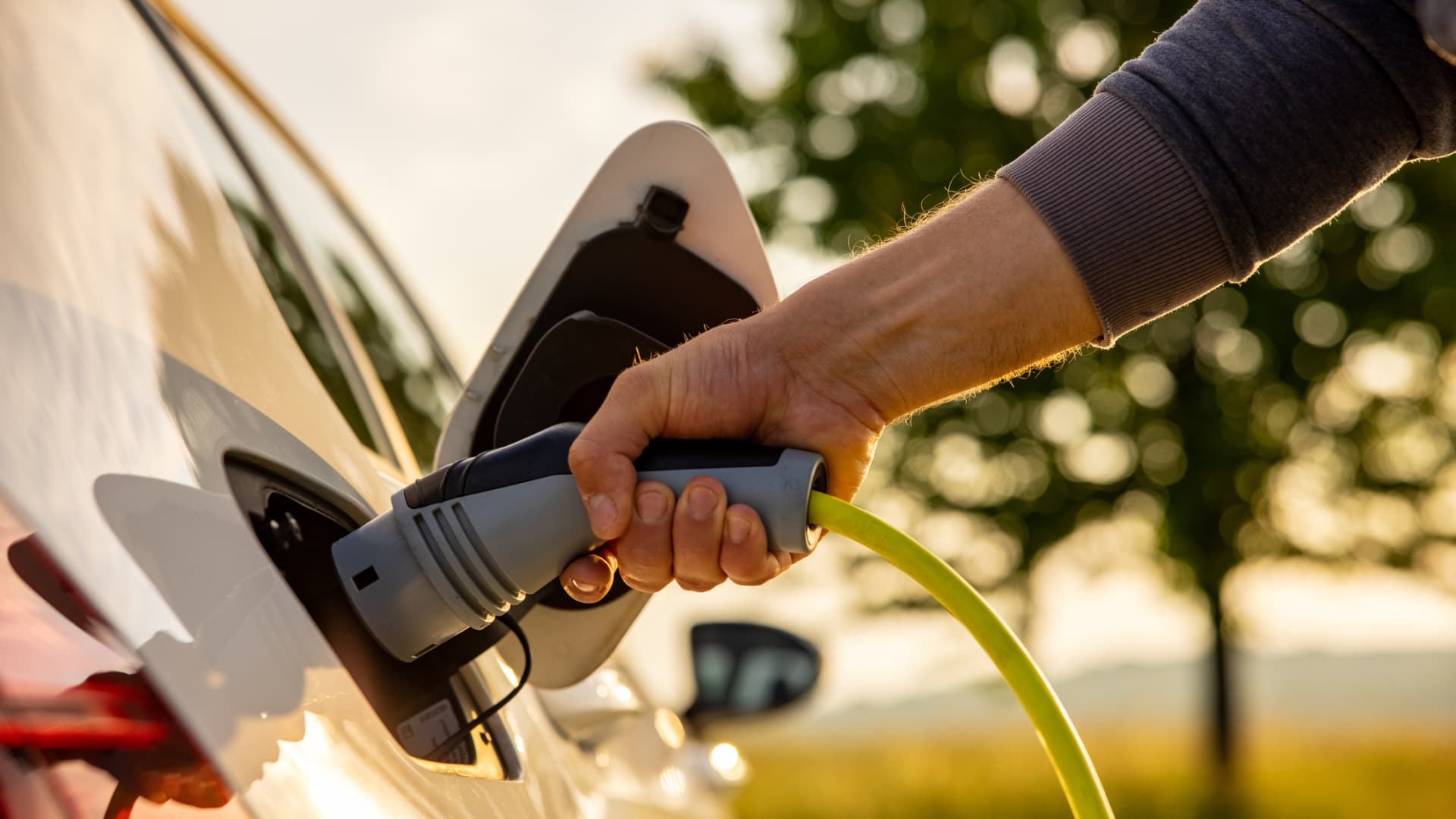Energy
Sunday, September 18th, 2022 11:50 am EDT
It’s common to see wind turbines spinning in many cities and towns these days. Solar arrays line highway dividers and solar panels are perched atop lots of neighborhood rooftops. And this is just the beginning. Solar and wind, known as mature renewable technologies, just got a boost — now they have the potential to “supercharge” an already rapid pace of development.
It’s all because of the Inflation Reduction Act (IRA). The actions within that far-reaching climate legislation will spark the cost of renewable energy to decline dramatically over the next decade. That conclusion comes from a new analysis from the ICF Climate Center, a global consulting firm.
They’ve deduced that the new US climate law will make clean energy projects easier to finance across the country, quickening the pace of the US energy transition. An acceleration of renewable development will also put downward pressure on energy prices, as renewables have the lowest marginal costs among generation sources.
Both prospects are good news for everybody.
How Various Levels of Renewable Energy are Projected to Rise
All of the technologies the authors of this report analyzed — whether mature wind and solar or emerging battery, hydrogen, and carbon capture and sequestration (CCS) — would see double digit percentage declines. The reason is due to an economic term called “levelized cost of energy” (LCOE).
Solar and wind LCOEs in 2030 with the IRA supercharge could be lower than those without it by 20%-35% and 38%-49%, respectively. The IRA could supercharge other emerging technologies, too, such as green hydrogen and CCS for power applications, producing positive economic results for the first time.
And what about batteries? Despite having higher costs than wind and solar facilities and no standalone tax credit, the development of grid scale batteries has grown at a brisk pace in recent years. The IRA’s broad definition of energy storage for the ITC should help emerging alternatives to lithium ion batteries come to market, the authors explain. Increasing the diversity of energy storage options could mitigate the possibility that supply chain bottlenecks will counter the benefits of the IRA’s incentives. By reducing the LCOE of grid scale lithium ion battery facilities by 18% to 20%, the IRA could both supercharge merchant development and make state mandates less costly.
Hydrogen could see the biggest cost decline — a huge reduction anywhere from 52% to 67% — of any technology. Green hydrogen facilities that take advantage of the climate law’s tax credits could become cost-competitive with new natural-gas-powered facilities by 2030. Carbon capture and storage could become economical for the first time, with its LCOE giving a supercharge to the industry and triggering falling costs anywhere from 20% to 23% by 2030.
Ian Bowen, a co-author of the report and energy markets analyst at ICF, said the expected cost reductions will provide “certainty” to investors in renewable energy projects “over a long period.” Bowen added, “That will be able to accelerate the transition.”
The Secret is in the Tax Credits
The IRA will usher in confidence in clean energy economics through enhancements to the existing production tax credit (PTC) and investment tax credit (ITC).
The IRA supercharge provides numerous tax credits, including the following items particular to renewables:
(Sec. 13101) The act modifies and extends through 2024 the tax credit for producing electricity from renewable resources, specifically wind, biomass, geothermal and solar, landfill gas, trash, qualified hydropower, and marine and hydrokinetic resources. The act allows additional credit amounts for facilities that pay prevailing wages and meet registered apprenticeship requirements. The act also allows a bonus credit amount for facilities that meet domestic content requirements for certain steel, iron, and manufactured projects and for facilities located in an energy community (i.e., a brownfield site or an area with significant employment related to oil, gas, or coal activities).
To come up with their data set, the authors conducted calculations with and without the clean energy tax credits in the IRA. Optimistic economics behind the IRA were evident within the average cost of 2020 electricity generation over the lifetime of a facility.
The authors remind us that incentives for clean energy in the US are not new. The PTC and ITC have been present in some form for decades and have been renewed nearly a dozen times—often with bipartisan support. What is new is the scale of the support in the IRA, providing potentially trillions of dollars of federal support over the next few decades, as well as its timing, coming during a period of strong momentum for clean energy and decarbonization.
The authors of this report argue that project economics will be improved with credit bonuses.
- A labor bonus: A labor bonus multiplies the base credits by 5 for projects that pay prevailing wages and meet certain apprenticeship requirements.
- A sourcing bonus: There is a sourcing bonus available to projects procuring 100% of steel and iron and certain percentages of manufactured content from domestic sources.
- Siting bonus: There is a siting bonus available to projects constructed in “energy communities” — that is, regions with high unemployment that have been dependent on traditional energy projects.
- Energy justice bonuses: There are two “energy justice” bonuses provided to small projects — one 10% bonus for those sited in low income areas or tribal regions and one 20% for projects that are part of low income housing units or economic benefit projects. The energy justice bonuses are limited to 1.8 GW in each of 2023, 2024, and 2025 and require explicit allocations by the IRS.
Development Challenges to Renewable Energy Projects
The authors assume within their projections that policymakers will address some sticky obstacles confronting clean energy projects.
The first is “not in my backyard” (NIMBY) perspectives that continue to haunt renewable energy potential in many communities. Project siting could become increasingly difficult if these sentiments intensify and available land becomes scarce, the report says. Offshore wind is an example of such a renewable energy project that faces many social and legal challenges.
Another challenge is interconnection, which refers to the process of connecting new energy sources to the electrical grid. In the PJM Interconnection region stretching from Washington, DC to Illinois, for example, more than 2,000 solar, wind, and battery storage projects have already waited years to connect to the grid, according to Advanced Energy Economy, an industry association.
Final Thoughts About The Economics Of Renewables
“How Clean Energy Economics can Benefit from the Biggest Climate Law in US History” was initially shared with the Washington Post’s “Climate 202“and was written by Ian Bowen, Dinesh Madan, Lavkesh Rajwani, and Shanthi Muthiah. Even with the challenges that renewable energy projects face, the IRA alleviates regulatory uncertainty for investors and developers by extending tax credits for decades, supporting and promoting clean energy innovation.
The authors remind us that, despite challenges, the US power sector is evolving rapidly and that the IRA has strong potential to accelerate that transformation.
Appreciate CleanTechnica’s originality and cleantech news coverage? Consider becoming a CleanTechnica Member, Supporter, Technician, or Ambassador — or a patron on Patreon.
Don’t want to miss a cleantech story? Sign up for daily news updates from CleanTechnica on email. Or follow us on Google News!
Have a tip for CleanTechnica, want to advertise, or want to suggest a guest for our CleanTech Talk podcast? Contact us here.
Advertisement
This post has been syndicated from a third-party source. View the original article here.





